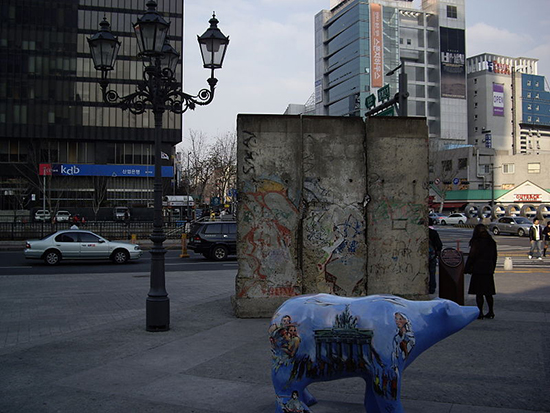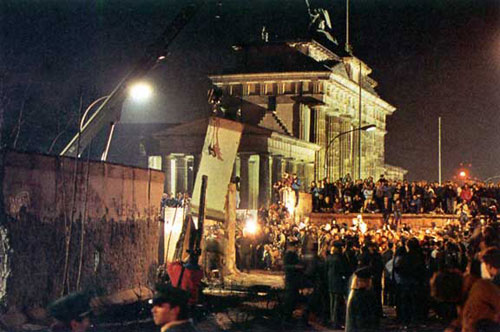On the night of November 9th, 1989, the wall that divided East and West Germany came down. That moment brought a full stop to the twenty-eight years of political repression, killings, and poverty that the Berlin wall had brought since it was put up in 1961.
Along one of the stretches of wall that wasn’t brought down, we find what nowadays constitutes the largest open air gallery in the world: the East Side Gallery. The section is 1316 meter long, and includes 113 murals painted by 118 different artists from around the world, whose artwork revolves around the theme of hope for a better future. Logically, the paintings have been restored throughout the years to help preserve them from vandalism and weathering.
This post explores the best known and most symbolic murals of this art gallery that draws in thousands of tourists and celebrities every year. Ready?
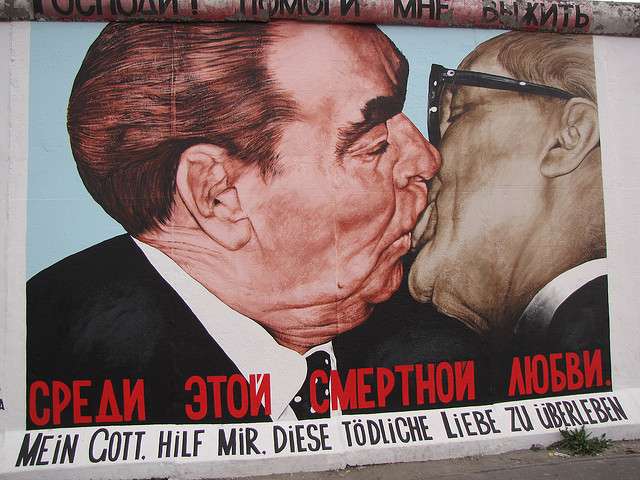
Let’s start with what is perhaps the best known and most striking mural of all, titled ‘My God, Help Me to Survive this Deadly Love’ painted by Dmitri Vrúbel in 1990. The mural depicts Leonid Bréjnev and Erich Honecker in a fraternal kiss (Bruderkuss in German); a reproduction of the 1979 photograph snapped during the celebration of the 30th anniversary of the German Democratic Republic.
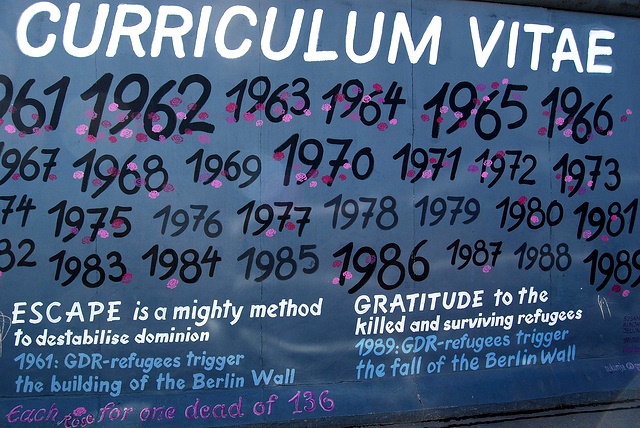
Another painting that’s particularly striking at the East Side Gallery is ‘Curriculum Vitae’, listing each one of the years the Berlin wall stood. Each date includes quotes and notes in memory of those fallen at the wall. It was painted by Susanne Kunjappu-Jellinek.
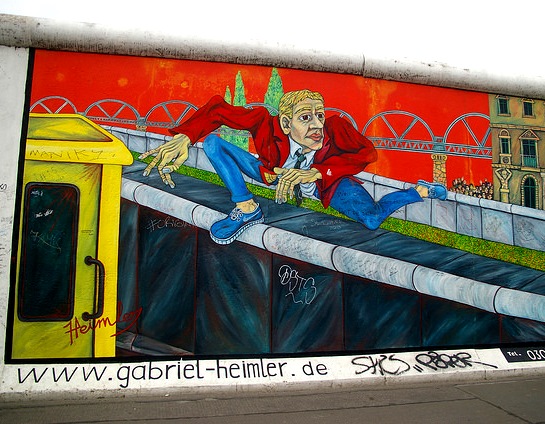
And what could be more self-evident than Gabriel Heimler’s ‘The Wall Jumper’? A straight-forward symbol of the freedom Germans experienced after the fall of the wall; easy to understand compared to the more abstract murals around it.
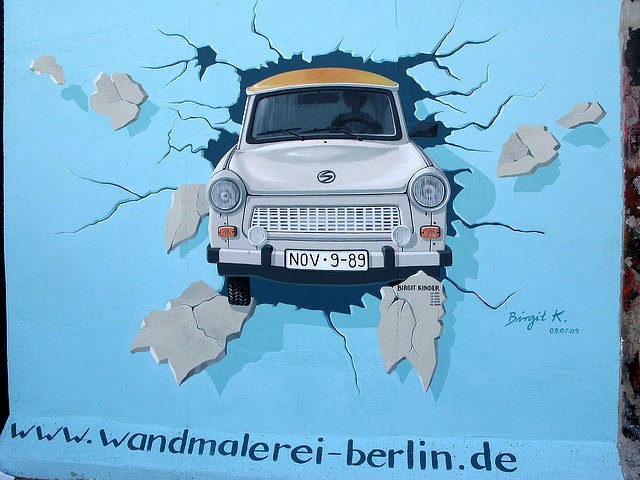
Birgit Kinder was also quite inspired twenty-five years ago, when she left behind the mural titled ‘Test the Rest’. It depicts a Trabant car, typical of communist Berlin, breaking through the wall on the date indicated on its license plate: November 9th, 1989. This painting is a favorite with tourists for its meaning and attention to detail. A few years later, this same artist drew the rear part of the Trabant car on another mural near Postdamer Platz.
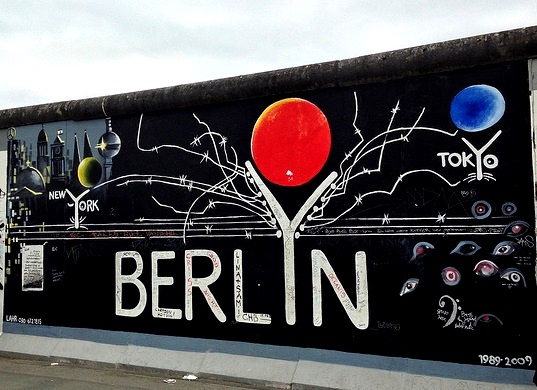
‘BerlYn’, and not Berlin. Gerhard Lahr, a well-known children’s books illustrator, represented the union of Tokyo and New York City in this breathtaking mural. He uses the letter ‘Y’, found on both names, and substitutes it in for the ‘i’ in ‘Berlin’, symbolizing the rupturing of the wall, as shown in the image above.
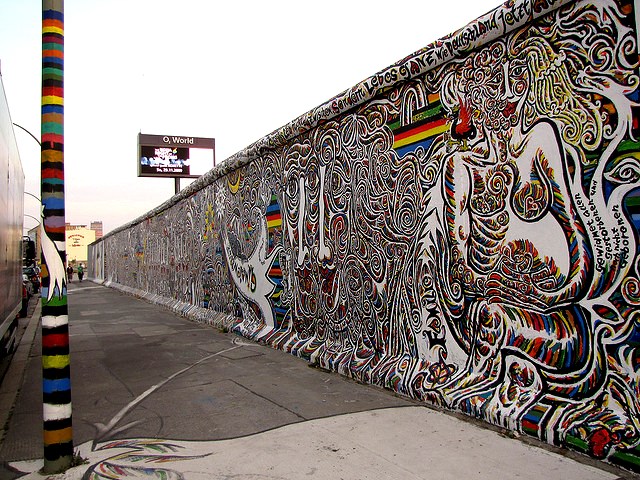
What is the longest mural at the East Side Gallery? It is called ‘Worlds People’ and it is remarkably creative. Schamil Gimajew rendered a painting brimming with colors and words depicting different shapes and faces.
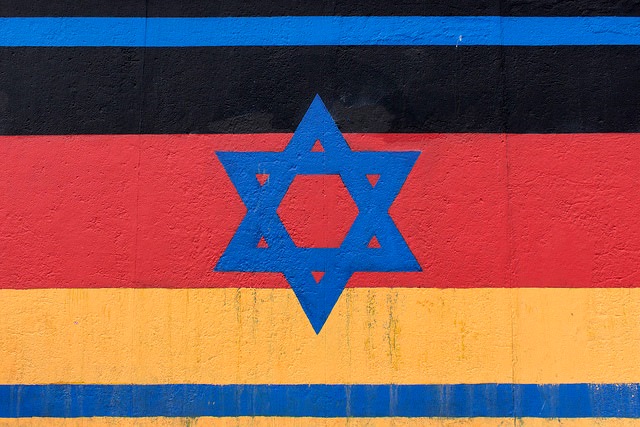
To end with, ‘Vaterland’ is one of those paintings that stand out for their very obvious meaning. One can clearly distinguish a Jewish star of David over a German flag. Günther Schäfer certainly had some unambiguous views back in 1990.
This is but a small sample of the huge display of talent and dissent to be viewed on this section of the Berlin Wall. The best way to discover and learn more about this chapter in world history is by seeing it up close. Book an apartment in Berlin near the East Side Gallery and view these works of art in the flesh.

 English
English Français
Français Deutsch
Deutsch Italiano
Italiano Español
Español